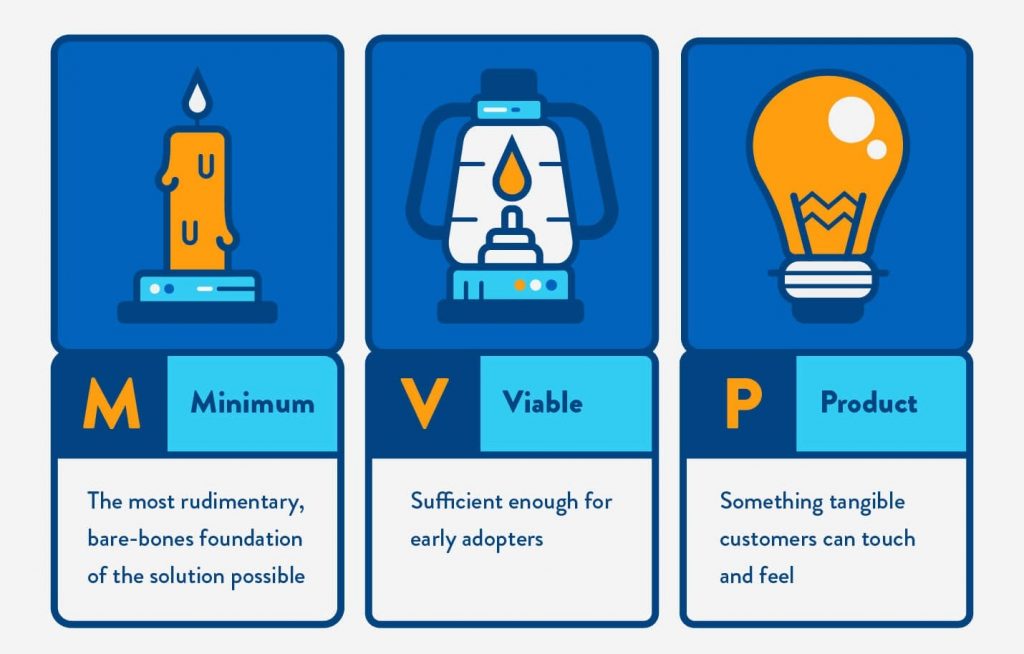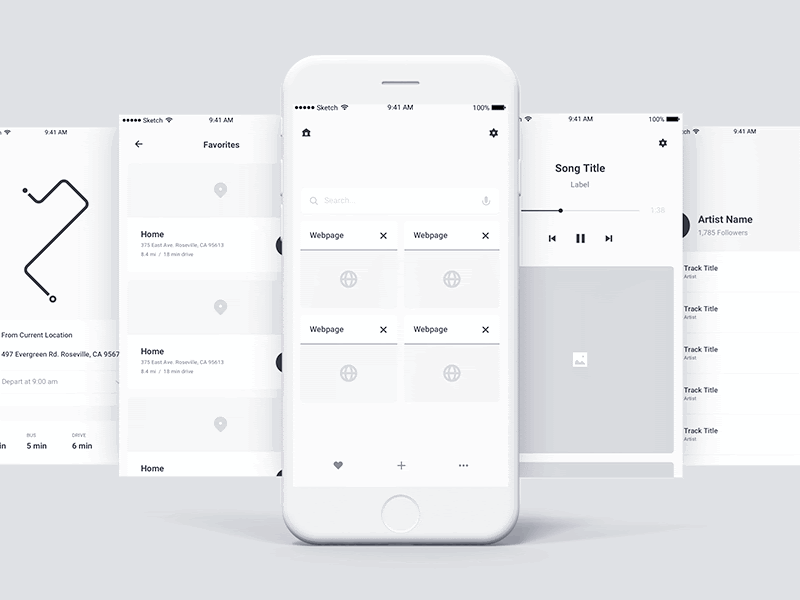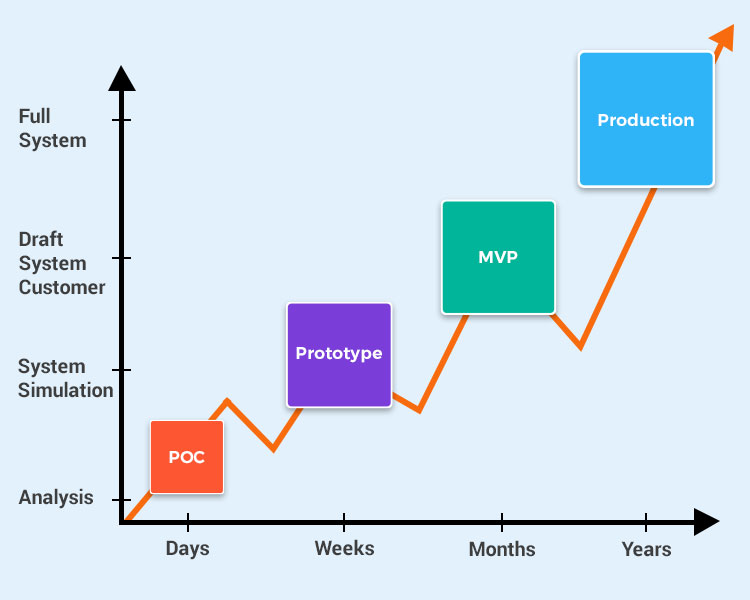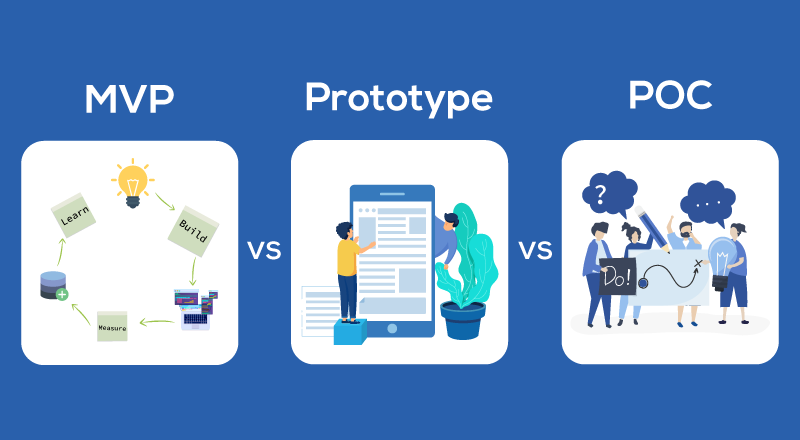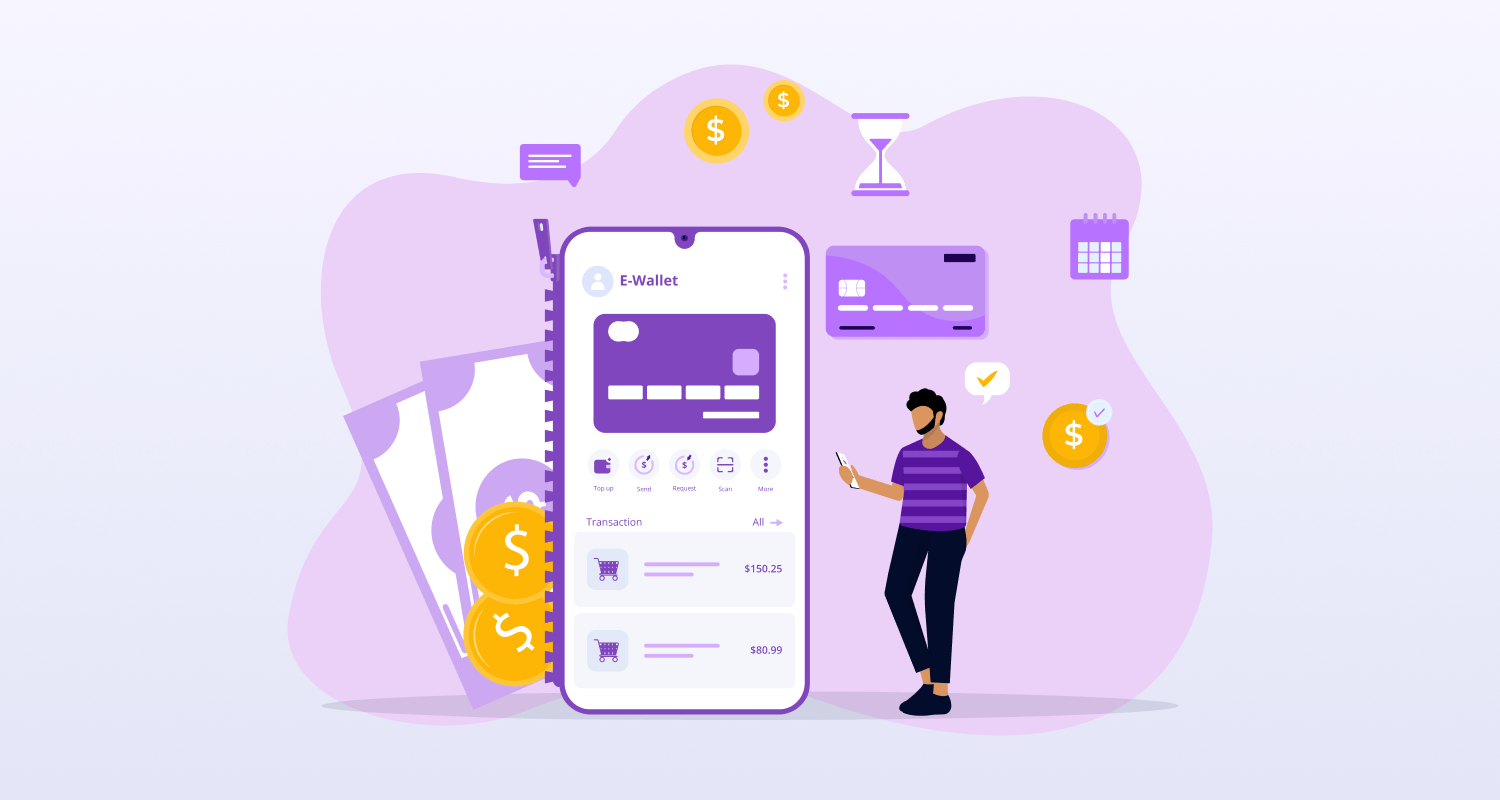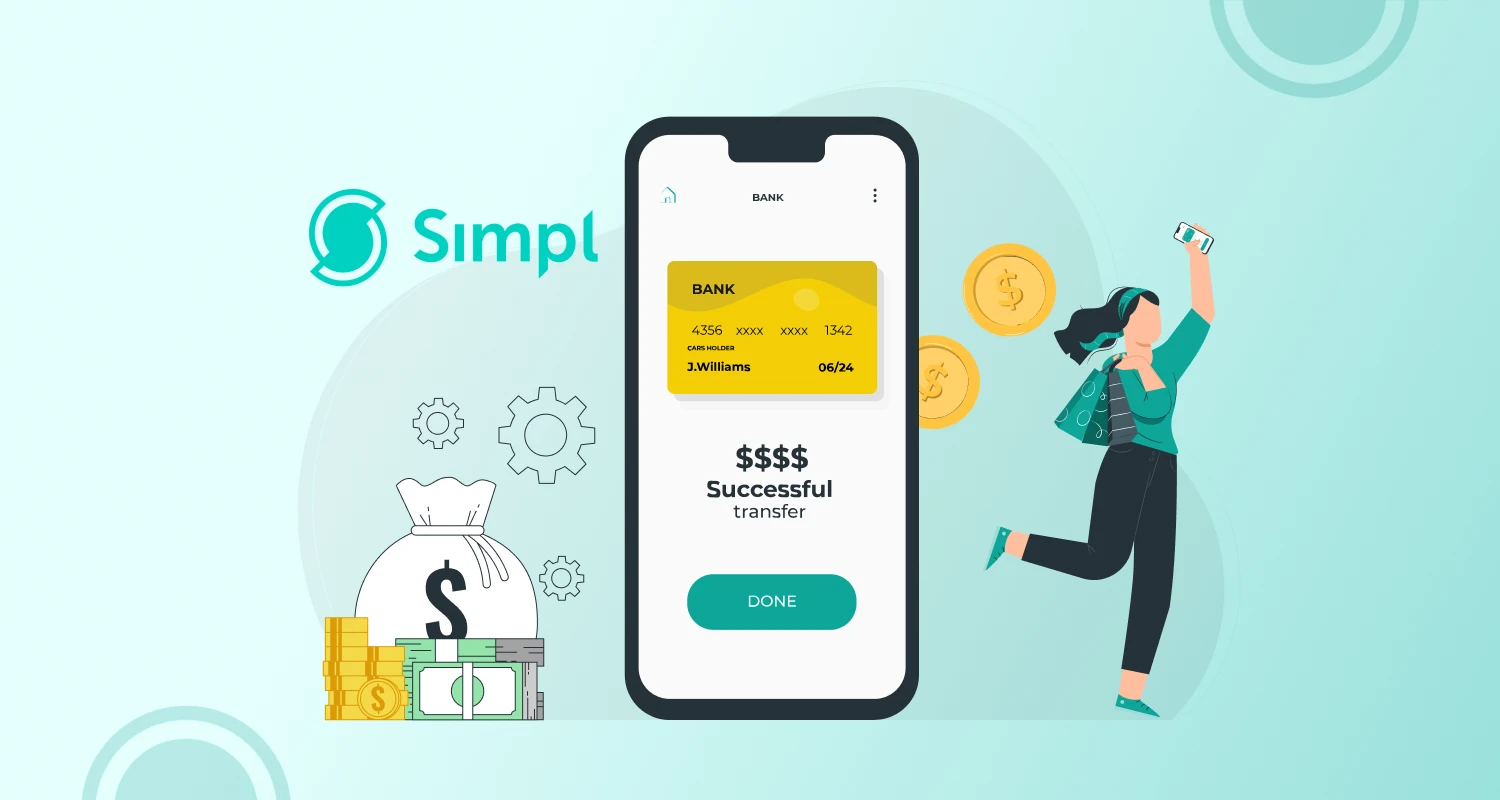Since every business or organisation is after including a mobile app in their business strategy and scheme of things, competition is really high and resounding among the mobile apps across niches. A mobile app project involves too many complexities including the conception of the core app functionalities and the user experience. The app idea must be validated by the actual users. This is why providing the app idea with the core design, features and key value proposition is important before it is further developed into a fully fledged product with more value additions.
For properly validated mobile app design, we have certain effective concepts such as Minimum Viable Product (MVP), Proof of Concept (POC) and mobile app prototype. All these concepts are there basically to validate the design idea before it is developed as a fully-fledged app product complete with features and UX attributes.
First of all, we need to explain and differentiate these app design concepts one by one.
What is Minimum Viable Product (MVP)?
Minimum Viable Product (MVP) as the term suggests refers to a basic or minimum app idea with core functionalities and key value proposition. The mobile app MVP is basically a very basic app form which is ready to be released and tested in the app market. The MVP approach basically helps an app to be shaped over the time starting from the very core app concept to the subsequent value additions as validated by the users over time. The process is iterative to accommodate new features and functionalities over the core concept of the app.
Read More: MVP App to Global Leader: 5 Successful App Examples
What is a Proof of Concept (POC)?
The app concept can also be validated by the user with a proof of Concept (POC). A POC unlike other design validation processes replies with a definitive “yes” or “no” answer to refer to the validity of the app concept. For a mobile app project, the POC is a very small design project for validating the app concept. With POC only the core app concept is put under the scanner while other concepts such as UX/UI design are not covered with a POC. POC is particularly effective for an app project if a similar app doesn’t exist in the app market.
What is a Mobile App Prototype?
A mobile app prototype represents the app idea and its basic UX/UI elements in a clearly laid out manner. This app design concept not just explains the core app idea but it also explains how the app idea is implemented through design. A mobile app prototype is actually presented with sketches or paper based app interfaces that presents the app idea and its core UX with an interactive model. As a mobile app design concept prototyping helps in visualising the app screens and how the app UX is going to work in a visually engaging manner.
Now that we have a gross idea of how these app design concepts work, let us explain their comparative value proposition.
MVP vs POC
Both the concepts such as the Minimum Viable Product (MVP) and the proof of concept (POC) are widely adopted methods by app startups to validate their expectations and assumptions about the ultimate app product. Both of these concepts help save app development cost and time. At the same time we must remember how their aims are different.
While an MVP is an actual app version with basic features and key value proposition, the purpose of a POC is to validate the key concept or technical feature of an app. A POC is there to validate the assumption of certain technical aspects of an app in clearly binary terms of “yes” or “no”. The POC is unleashed for validating certain app functions or technical aspects mostly before releasing an app product. On the other hand, an MVP is an app ready to be released and make revenue from the app market.
POC vs Prototype
Though both POC and Prototype are two concepts that are often used interchangeably, they actually mean quite different things. While the POC is to validate whether a certain app feature or a technical app attribute can be implemented, prototype allows releasing the full app design through paper sketches. While POC is to prevent you from putting your energy and resources behind a function or feature or UX element that may not work well, a prototype is implemented to showcase the entire app design and UX elements with detailed sketches of every screen. A POC is to test a single issue while prototype is for validating the entire app design.
MVP vs Prototype
It is obvious that the concept of MVP has some serious differences with the prototype. While the first is a final app product designed and developed with core app features and UX elements, the app prototype is basically the paper-sketches of the app design concept which will be evaluated and put into shape for the final app design. While the MVP is an app fully designed with the basic features, the prototype is the app design with detailed sketches of the screens which is used by the designers to shake the app UI and UX.
MVP vs POC vs Prototype: Who Won Finally?
All these design concepts seem to be equally important and effective in the mobile app design process and none of them seem to have any upper hand over the other two. While the MVP concept is to build a basic app product and develop it further with subsequent value additions over time, the POC and Prototype are concepts to validate app design while the app is still undergoing development. The POC helps validate any key technical concept or certain function while the app prototype helps validating the entire app design screen by screen.
Conclusion
All three of these design concepts are equally effective for mobile app projects depending upon the app project and design challenges. MVP is great for iterative development over time with the scope of subsequent value additions, POC is great for app ideas and features that are unique in the market and prototype is ideal for validating the entire app design in detail.



